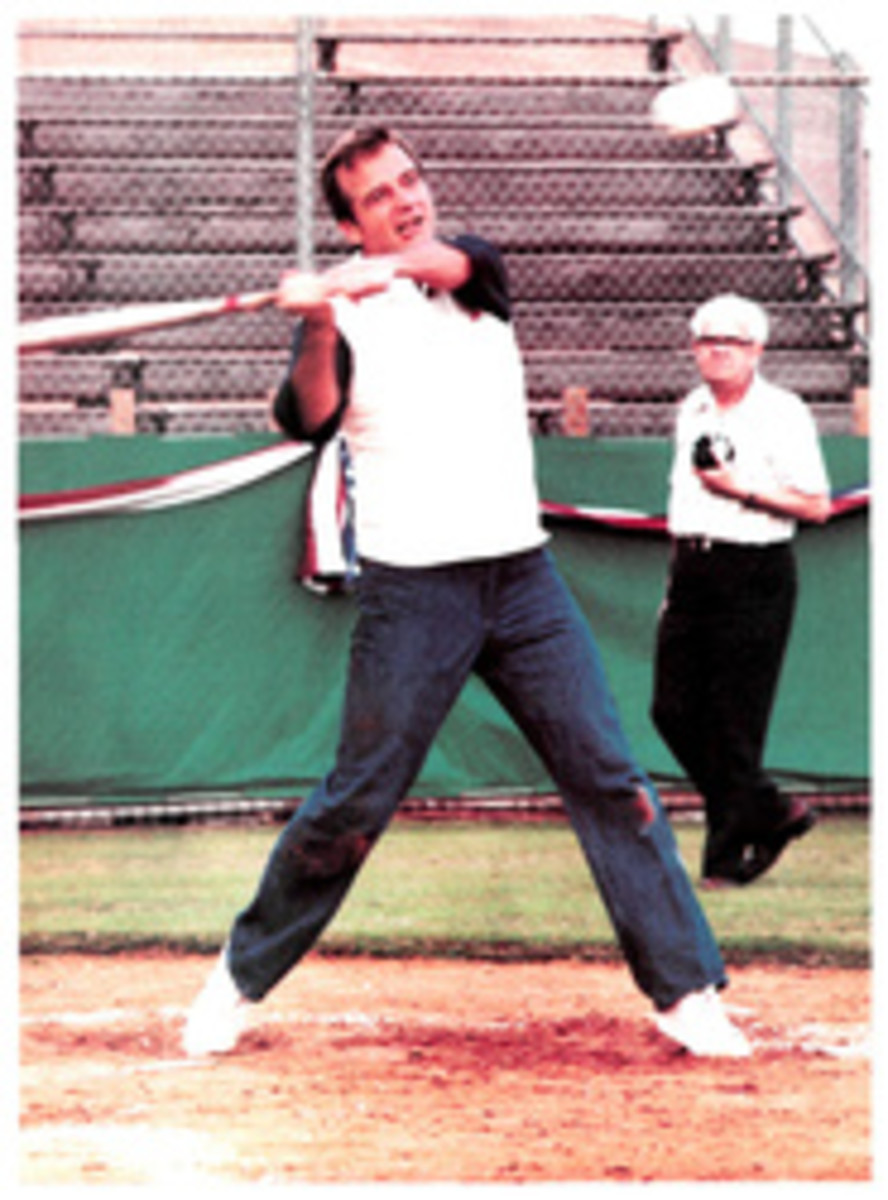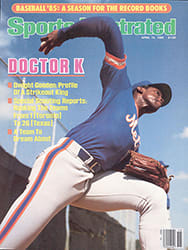
CONTACTS ARE GREAT, BUT SOME FANS MISS THE SPECTACLE OF SPECTACLES
Contact lenses are depriving many children of potential heroes. Before contacts, kids with glasses were able to endure the taunts of friends with 20/20 vision because they could take comfort from ballplayers who wore glasses, too. But that breed of athlete is becoming increasingly difficult to find. Where have you gone, Dom DiMaggio? Where are today's Henry (Specs) Meadowses, or Jim (Professor) Brosnans?
Children head the list of people who admire athletes, and their favorites are often chosen because of a common thread shared with, say, a boxer, a runner or a ballplayer. That bond may be a hometown, a birthday or a physical problem—like the need for glasses. Aspiring young outfielders in Puerto Rico look up to many ballplayers, but they deify Roberto Clemente. Willie Mays and Henry Aaron were great, but Clemente was one of their own.
So it is only natural that a myopic kid should identify with a myopic athlete. Moreover, even the most visually acute fan can admire an athlete who is coping with what in sports, at least, is a major handicap.
But who's a kid with glasses supposed to look up to now, when he doesn't even know which athlete's vision is less than perfect until he sees him combing the ground for lost contacts?
How are children to know what can be accomplished by people who wear glasses if they don't see athletes wearing them? They have to wade through the history books to see what athletes looked like in glasses, to see that even the bespectacled can be successful.
Specs Meadows was a 20-game winner for the Pirates in 1926. Joe Kuhel, a first baseman who played for the Senators and the White Sox during the 1930s and '40s, hit .322 in 1933. Over the 1934 and 1935 seasons, Mel Harder, who was a pitcher for the Indians, won 42 games. Then came Brosnan. He was a top-notch relief pitcher who had earned his nickname, Professor, long before he reached the major leagues in 1954 because, as the Baseball Register put it, "he wears glasses, smokes pipes, and reads books constantly."
But there is not necessarily a correlation between a pitcher's glasses and his control. Take the case of Ryne Duren, who wore Coke-bottle lenses in the late 1950s and early '60s—and terrified batters with his wildness. The 1960s and '70s brought Richie Allen and Paul Splittorff, both fine players if not Hall of Famers, but that didn't matter to some of us, as long as we knew that without glasses they would have to have been in another line of work.
Some athletes who wear glasses have reached the very pinnacle of their sports—Reggie Jackson in baseball, Eric Dickerson in football and Billie Jean King, Arthur Ashe and, most recently, Martina Navratilova in tennis. But glasses have given even the best athletes a touch of vulnerability, have made them seem less perfect. George Mikan was a great center. He wasn't much shorter than Chamberlain and was as tall as Russell, but his glasses made him seem more reachable—if not actually shorter, almost short enough to look right in the eye of a spindly-legged kid practicing his hook shot in the driveway.
Contact lenses aren't all bad, of course. They do allow the visually impaired to participate safely in sports they hesitated to take up before because they could have broken their glasses. But another reason they might not have played was embarrassment. Embarrassment over their lack of physical ability? Wrong. Embarrassment at having their glasses fly off in the middle of a game and having to yell "Time!"? Wrong again. The greatest embarrassment to the glasses-wearing would-be athlete is the band that stretches from temple to temple around the back of the head.
Admittedly, contact lenses free us to play contact sports. Sure, great athletes have played football and basketball in glasses, but how many kids would dare step into a full-contact karate ring after school or dream of becoming champion of the international kick-boxing circuit if they had to wear glasses instead of contacts?
Not all kids hate their glasses, though. There was one 12-year-old Little Leaguer who went through a whole season wearing a pair of glasses whose lenses were obsolete. Words on the blackboard were once again as fuzzy as they had been back when he was fitted with his first pair. But he was afraid to change to the new lenses his eye doctor had prescribed for him because of "the step."
Those who wear glasses are familiar with the step. During the first few days of wearing glasses with stronger lenses, there appears to be a step, about one foot high, just in front of you. It looks like a stationary version of the here-comes-a-dream-sequence wave that ripples through the TV picture just before a Mary Stuart or Anthony Geary flashback. It's only temporary; your eyes adjust to their new assistants in less than a week, and the step disappears.
But a few days could have made all the difference to this young outfielder. He was afraid the step would affect his finely tuned ability to pick up the pitch. It didn't matter that his batting average was somewhere around his weight, lower than his IQ, and about half the number of dioptres needed to correct the vision in his right eye. Or that he was the kind of lad who always inspired the same phrases of encouragement from the coach, a man so intense even his son, the pitcher, had to call him coach on the field. "A walk's as good as a hit," the youngster with glasses would hear. And "Sure, I promise. Next inning. Next inning we'll move you out of rightfield."
Finally, just before the last game of the season, he switched glasses. After all, Dom must have needed new glasses every now and then, and even Reggie has had to get new ones—and it never seems to bother them. The youngster batted four times.
The game meant nothing. The team certainly wasn't going to the playoffs, and half the players were already at summer camp. There were no predictions of home runs, there was no pointing to the bleachers (partly because the bleachers were a jungle gym in right center). But the kid went 3 for 4. Everything looked sharper to him, especially the ball as it came flying out from behind the step.
So. Did that Little Leaguer grow up to join his four-eyed heroes in the majors, to serve as a model for the disabled of the next generation? No. He grew up to be just another four-eyed man who sits back to watch the ball game on TV, still looking for physically imperfect players. And every time he puts on a new pair of glasses, he sees the step. A few days later the step disappears, now gone before even one baseball has had a chance to spin out from behind it.

